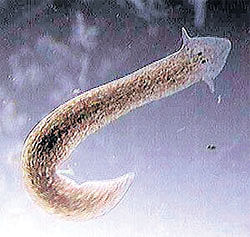
Scientists have decoded the full genome of the eye of a flatworm which they say could hold the key to battling a range of debilitating eye diseases in humans.Researchers from Massachusetts Institute of Technology (MIT) have decoded the full genome of the planarian flatworm’s eye and believe it could play a ‘starring role’ as a model for studying eye development and eye diseases, the Daily Mail reported.
Planarian flatworm is able to recreate missing parts of its body, even as adults.”It’s exciting to get this complete list of genes in one fell swoop. This provides perhaps the most comprehensive list of genes involved in eye biology in a model system other than Drosophila that can be used for rapidly studying the function of those genes,” Professor Peter Reddien from MIT was quoted by the paper as saying.
The most studied previous model for eye development were the compound eyes of fruit flies, as their genes are well documented. Reddien and colleagues analysed more than 2,000 planarian eyes, finding 600 active genes and studying 200 of them in more detail.
Several of the identified genes are known to have versions that play a role in the vertebrate eye but have not been found in the fruit fly eye. Among these are genes involved in eye development and others associated with age-related macular degeneration and Usher syndrome, a disorder that causes progressive retinal degradation.
A key gene is the transcription factor ovo, which activates the expression of many other genes as the eye forms. It had not been associated with eyes until the latest study, and was found to be vital for eye generation in planarian worms.When ovo is experimentally turned off, planarians with head amputations cannot regenerate their eyes and eyes of otherwise normal adult planarians vanish after a couple months.The study was published in the journal Cell.